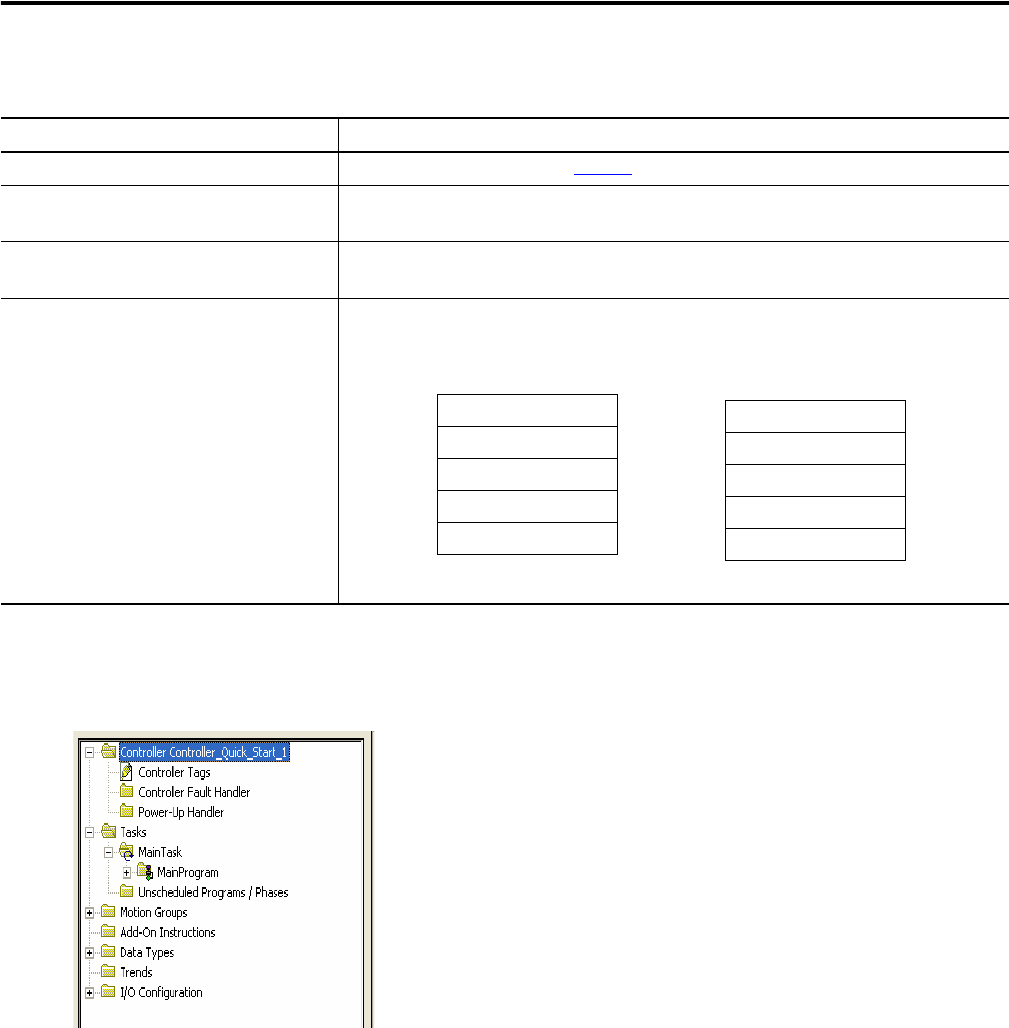Quick Start Owner's manual
Table Of Contents
- 1756-QS001E-EN-P, Logix5000 Controllers Quick Start
- Summary of Changes
- Table of Contents
- 1 - Program and Test a Simple Project
- What You Need
- Before You Begin
- Follow These Steps
- Create a Project for the Controller
- Add Your I/O Modules
- Look at Your I/O Data
- Ladder Logic
- Enter a Function Block Diagram
- Assign Alias Tags for Your Devices
- Establish a Serial Connection to the Controller
- Download a Project to the Controller
- Select the Operating Mode of the Controller
- 2 - Organize a Project
- 3 - Program Add-On Instructions
- What You Need
- Follow These Steps
- Insert an Add-On Instruction
- Copy an Add-On Instruction Definition
- Import an Add-On Instruction Definition
- Access a Parameter That Is Not Visible
- Monitor or Change the Value of a Parameter of an Add-On Instruction
- View the Logic of an Add-On Instruction
- Edit and Monitor an Add-On Instruction
- Update an Add-On Instruction to a Newer Revision
- 4 - Program an Equipment Phase
- 5 - Program a Project Offline
- 6 - Document a Project
- 7 - Go Online to the Controller
- 8 - Program a Project Online
- 9 - Troubleshoot the Controller
- Index
- Back Cover

Publication 1756-QS001E-EN-P - October 2009 41
Organize a Project Chapter 2
As you create user-defined data types, follow these guidelines.
Follow these steps to create a user-defined data type.
1. Right-click Data Types and choose New Data Type.
2. Type a name for the data type (not the name of a tag that will use the data type).
Guideline Details
Consider the pass-through of descriptions. See User-defined Data Type on page 98
.
Data that represents an I/O device requires
additional programming.
If you include members that represent I/O devices, you must use logic to copy the data
between the members in the user-defined data type and the corresponding I/O tags.
If you include an array as a member, limit
the array to a single dimension.
Multi-dimension arrays are not permitted in a user-defined data type.
When you use the BOOL, SINT, or INT data
types, place members that use the same
data type in sequence:
Logix5000 controllers allocate memory in 4-byte chunks. If you sequence smaller data
types together, the controller packs as many as it can fit into a 4-byte chunk.
More Efficient
BOOL
BOOL
BOOL
DINT
DINT
Less Efficient
BOOL
DINT
BOOL
DINT
BOOL










